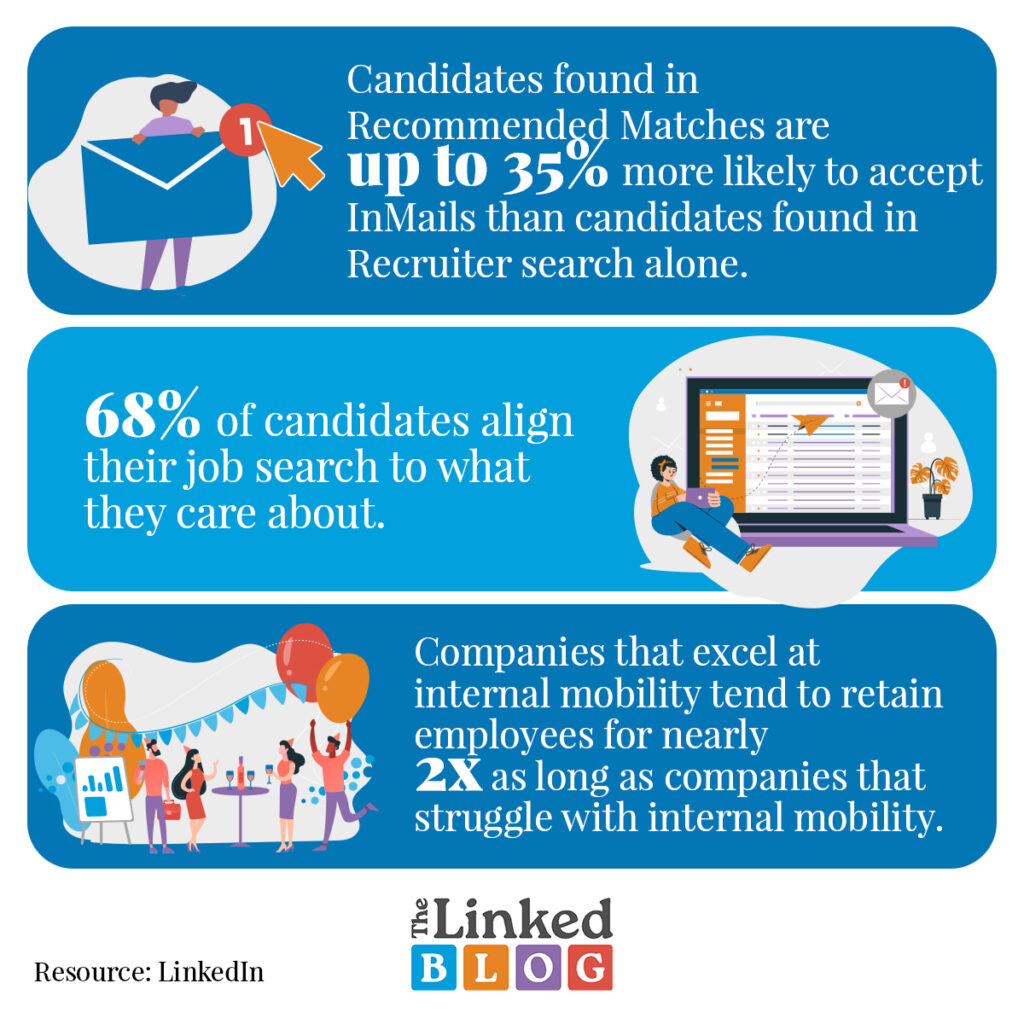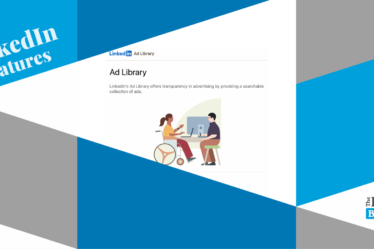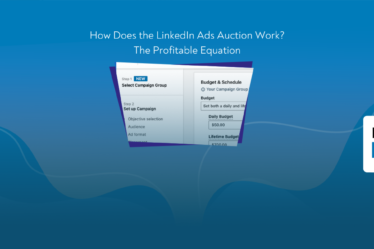
LinkedIn CEO Ryan Roslansky created the concept of his keynote speech at Talent Connect 2022 around uncertainty while speaking about the highs and lows that talent acquisition professionals experienced in 2022.
However, he emphasised that where there is uncertainty, there is also opportunity. There is an opportunity for you and your team to shift your hiring strategy from focusing solely on education and experience credentials to focusing on skill sets. There is also the possibility of creating a more equal, people-focused workplace.
Finding the appropriate fit for every position has always been one of the main issues recruitment teams have to deal with. To be of assistance, here is a list of 10 LinkedIn Recruiter Features that were released and improved in 2022 that can help you in time of uncertainty.

Newly released features:
- Recommended Matches – This new function automatically explores our network for candidates who possess the abilities and traits your team is seeking, and it then delivers up to 25 recommendations for potential hires each day. Additionally, it becomes smarter depending on the searches of your recruiters.
- A new Spotlight filter – Internal Candidates – the new filter makes it simpler for your team to find qualified candidates with the appropriate capabilities. This is the process: Your team can choose Internal Candidates as a filter in Recruiter Spotlights while looking for candidates to fill a position. Current employees will display the Internal Candidates badge when you evaluate your pipeline, making it simple to differentiate them apart from external candidates.
- Commitments feature – You must effectively convey the values of your company to draw in the best candidates. For your Company Page, LinkedIn has developed a Commitments feature. It can be found in the “About” section of your company page and enables you to authentically demonstrate your values while showcasing relevant content such as reports, certificates, articles, blogs, and videos.
- Meet the Hiring Team feature – This year, LinkedIn added a Meet the Hiring Team function to the social frame, allowing LinkedIn members to connect with the hiring team for the job posted, customise their application, and gain knowledge about the people they’ll meet during the application process. They also added a Hiring in Your Network feature, which alerts job seekers when one of their first- or second-degree connections is hiring for a relevant position and alerts relevant connections to share the position with their network.
- Diversity Nudges – With real-time nudges that give measurements and recommendations to increase the gender composition of talent pools, Diversity Nudges assist recruiters in achieving diverse slates. Diversity Nudges provide the minority gender % ratio and offer Locations, Skills, or Companies criteria that have the most influence on balancing the search.
- Post new jobs on your LinkedIn page automatically – Job post automation is a feature that allows Page admins to automatically post new job listings associated with their Page on a daily basis, with the exception of Basic Jobs. When a job is deleted, the corresponding Page post will also be deleted. The Page admin’s name will be associated with the post in the admin view. Currently, the job post content is in English, but there are plans to offer additional languages in the future.
Improved features:
- Enhanced Recruiter Inbox – The updated features integrate with your recruitment workflows to boost efficiency, optimise candidate management, and make collaboration easier so your team can hire more efficiently. You can also configure an out-of-office reply in the Recruiter Inbox.
- Hide Candidate Names and Photos in Recruiter – Another way to improve workplace diversity is to concentrate on a candidate’s skill set rather than their identity or visual appeal. It conceals applicants’ photos and replaces them with completely random avatars, as well as substituting randomly generated letters for candidates’ names. The function is now far more adaptable. Rather than having to activate the tool for each Recruiter, administrators and project owners can now toggle the feature on and off for individual projects.
- Suite of Skills features – LinkedIn developed a suite of Skills features to help easily filter applicants based on their skills and positions. One of the best aspects of these features is that they can assist your team in discovering “real treasures.” The Similar Skills feature highlights applicants with skills that are similar to those saved by your recruiters. And, rather than relying on credentials, Contextual Skills can assist you in determining qualified applicants based on where and how they’ve used their skills — including skills associated with previous employment and qualifications they have obtained.
- Advanced reporting filters – If your team uses Recruiter, you’ll want to know how many hires and applicants you are receiving from LinkedIn so you can calculate the ROI. LinkedIn is constantly working to make this data more accessible, which is why they have introduced new advanced reporting filters to help you easily access the most important data. New filters have been added for user location, job location, project status, and role type. Administrators can now create groups in the Account Center to view reporting by teams. All of the new filters can be applied to reports such as Usage, InMail, Jobs, Pipeline, Summary, Custom-User, Custom-Applicant, and Custom Project.
As final thoughts, Ryan shared that LinkedIn has the data, tools, and signals on its platform to enable this new work future. But if we don’t change the way we think about people, we won’t be able to develop the future we need.



